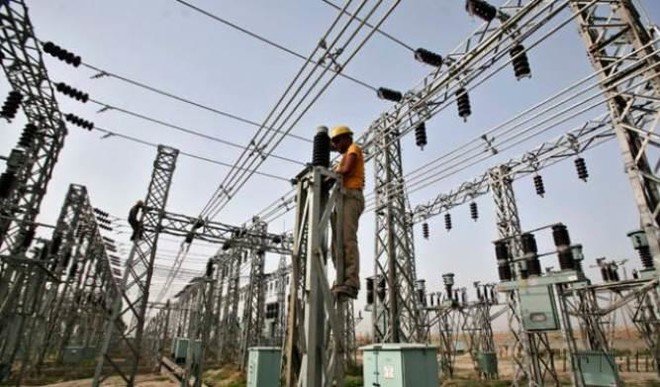Electricity generation in the country plunged to 3,456 megawatts on Tuesday, losing 1,108MW in seven days, according to latest data.
Total power generation dropped from 4,564.60MW as of 6.00am on February 19 to 3,456.20MW on February 24, a day after the presidential and National Assembly elections. It stood at 4,358MW as of 6.00 am on Saturday.
Data from the Nigeria Electricity System Operator, an arm of the Transmission Company of Nigeria, showed that generation fell further to 3,456.60MW as of 6.00 am on February 26.
The system operator put the nation’s installed generation capacity at 12,910.40MW; available capacity at 7,652.60MW; transmission wheeling capacity at 8,100MW; and the peak generation ever attained at 5,375MW.
The nation generates most of its electricity from gas-fired power plants, while output from hydro-power plants makes up about 30 per cent of the total.
Total generation capacity of 2020.7MW was unutilised on Wednesday as a result of low demand by Discos (1,430.7MW), line constraints (440MW) and water management (150MW).
Seven of the nation’s 27 power plants were not generating any megawatts as of 6.00 am on Monday. The idle plants were Olorunsogo NIPP, Gbarain NIPP, Afam IV, and four independent power plants, namely AES, ASCO, Rivers and Trans-Amadi.
Generation from Egbin, the nation’s biggest power station, fell to 491MW as of 6.00 am on Monday from 581MW on February 8. The plant, which produced as high as 1,085MW on March 15, 2016, has been generating far less than its installed capacity of 1,320MW in more than two years.
The TCN announced earlier this month that the national grid successfully transmitted a new power generation peak of 5,375MW on February 7, 2019, at 9 pm.
It said it was the first time that the grid had generated, transmitted and distributed such quantum of power, describing it as evidence of the success of the government’s policy on incremental power.
The TCN, which manages the national grid, is still fully owned and operated by the government.
Electricity generation companies recently complained that their plants were being forced to operate below their optimal capacity levels.
The Executive Secretary, Association of Power Generation Companies, the umbrella body for the Gencos, Dr Joy Ogaji, attributed the problem to transmission and distribution.
She said, “Specifically, generation companies are pinned down by some operational impediments. The frequency of instructions to either increase load or decrease load (ramp up and ramp down) and, in some cases, shut down, has induced damaging stresses to the components of the machines
“These instructions, reflective of the grid behaviour, are subjecting key electrical components of the power plants to operational stresses. Our available generation has always been steady between 7,500MW and 8,000MW; you can check the records at the National Control Centre, Osogbo.”
The power grid has suffered four collapses so far this year, according to data from the system operator.
READ ALSO: GenCos decry huge Power Losses from DisCos
According to the Nigerian Electricity Regulatory Commission, a total system collapse means total blackout nationwide, while partial system collapse is a failure of a section of the grid.
The grid has continued to suffer system collapse over the years amid a lack of spinning reserve that is meant to forestall such occurrences.
Spinning reserve is the generation capacity that is online but unloaded and that can respond within 10 minutes to compensate for generation or transmission outages.
Out of the five power stations meant to provide spinning reserves, none had any actual reserve as of 6.00am on Thursday, with the contracted reserve put at 295 megawatts.
The power stations are Egbin, Delta, Olorunsogo NIPP, Geregu NIPP and Omotosho NIPP.













